Van Dyke beard

A Van Dyke (sometimes spelled Vandyke,[1] or Van Dyck[2]) is a style of facial hair named after the 17th-century Flemish painter Anthony van Dyck (1599–1641).[3][4] A Van Dyke specifically consists of any growth of both a moustache and goatee with all hair on the cheeks shaved.[3] Even this particular style, though, has many variants, including a curled moustache versus a non-curled one and a soul patch versus none. The style is sometimes called a "Charlie" after King Charles I of England, who was painted with this type of beard by van Dyck.[5] "Pike-devant" or "pickedevant" are other little-known synonyms for a Van Dyke beard.[6]
Popularity[]
This style of beard was popular in Europe in the 17th century.[7] It died out in Britain with the Restoration, when French styles and wigs became popular. The Van Dyke beard style is named after the 17th-century Flemish painter Anthony Van Dyke.[8] For some time after, however, some men, known as "vow-beards", continued to wear them, vowing to wear them until the King did so again.[9] It became popular in the United States in the 19th century. Columnist Edith Sessions Tupper, of the Chicago Chronicle (1895–1908), condemned this style, along with the goatee, as indicative of a man "who was selfish, sinister, and pompous as a peacock."[4]
The style was worn by van Dyck himself and by many of the sitters for his portraits, including King Charles I of England.[3] The Russian Marxist revolutionary Vladimir Lenin also wore a Van Dyke. The Van Dyke had a revival in the 19th century[citation needed] and was worn by several well-known figures, including General Custer (among other styles) and the actor Monty Woolley. Colonel Sanders would also qualify as having a Van Dyke.
Examples[]

Maurice, Prince of Orange, by Michiel van Mierevelt (c. 1613-20)

Ferdinand II, Holy Roman Emperor, unknown artist (1614)
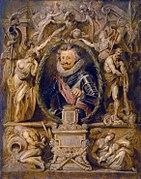
Charles Bonaventure de Longueval, Count of Bucquoy, by Peter Paul Rubens (1621)

Gustavus Adolphus, attrib. Jacob Hoefnagel (1624)

Jacobus Arminius, by Willem Isaacsz Swanenburg (1625)
Charles I of England by Anthony van Dyck (1635-6)

Cardinal de Richelieu, by Philippe de Champaigne (c. 1642)
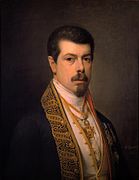
Antonio María Esquivel (1847)
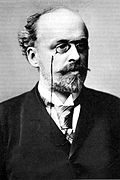
Carl Zeller

Self-portrait by Jean Augustin Daiwaille Dutch portrait painter (1801-1850)

Winfield Scott Hancock (1863)
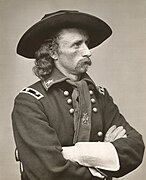
George Armstrong Custer (1865)

Buffalo Bill (William Cody) (c. 1875)
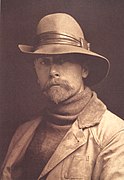
Edward S. Curtis (1899)

Wilhelm Maybach (1900)

William Wetmore Story

Vladimir Lenin (1920)

Rudolph Valentino (1924)

Colonel Sanders (c. 1974)

Pierce Brosnan (2005)
Prince Aimone, Duke of Apulia (2006)

Christian Bale (2009)

Johnny Depp (2011)
References[]
- ^ As by the OED and OED and Chambers 20th Century Dictionary; Grosswirth Marvin, The Art of Growing a Beard, p. 55, 2014, Courier Corporation, ISBN 0486797252, 9780486797250; the artist is today normally referred to as “van Dyck", though there are many variants, but when the term for the beard became popular "Van Dyke" was more common.
- ^ LIFE. Time Inc. April 24, 1939.
- ^ Jump up to: a b c Sherrow, Victoria (2001). For Appearance' Sake. Greenwood Publishing Group. pp. 114–115. ISBN 978-1-57356-204-1.
- ^ Jump up to: a b Peterkin, Allan (2001). One Thousands Beards. Arsenal Pulp Press. pp. 172–173. ISBN 978-1-55152-107-7.
- ^ Shipley, Joseph Twadell (2001). The Origins of English Words. JHU Press. p. 28. ISBN 978-0-8018-6784-2.
- ^ "pike-devant". wordnik. Retrieved 21 September 2018.
- ^ Sherrow, Victoria (2006). Encyclopedia of Hair. Greenwood Publishing Group. p. 59. ISBN 978-0-313-33145-9.
- ^ "Van Dyke Beard style". Indore(M.P.), India.
- ^ "The Westminster Review". 62 (121). Leonard Scott Publication. July 1854: 33. Cite journal requires
|journal=(help)
External links[]
 Media related to Van Dyke beards at Wikimedia Commons
Media related to Van Dyke beards at Wikimedia Commons
- Beard styles
























